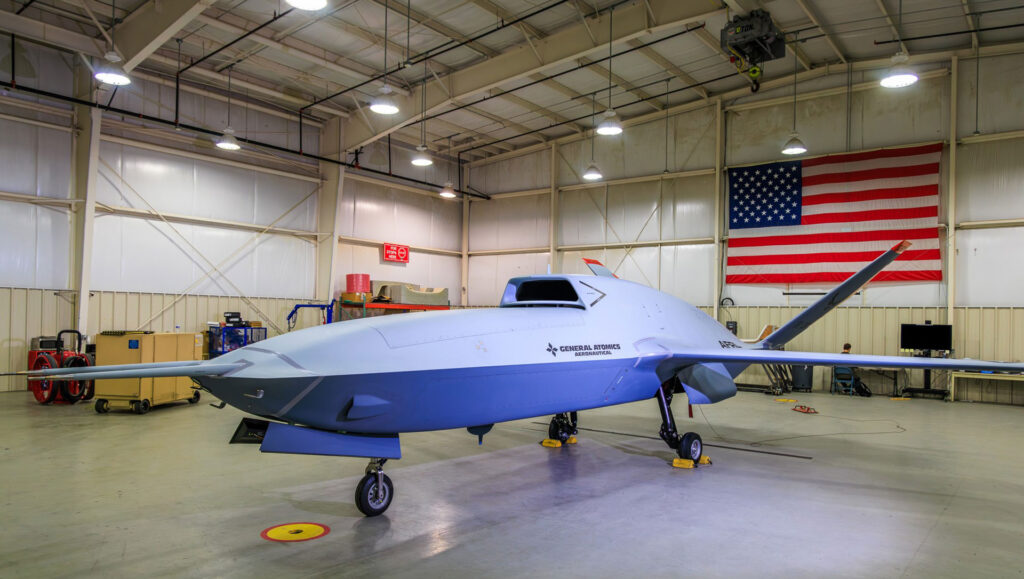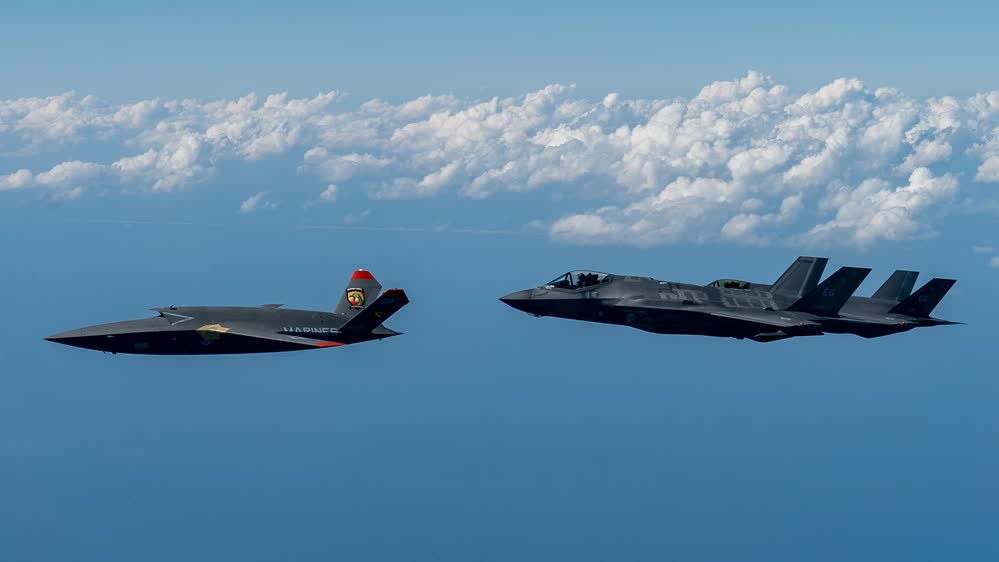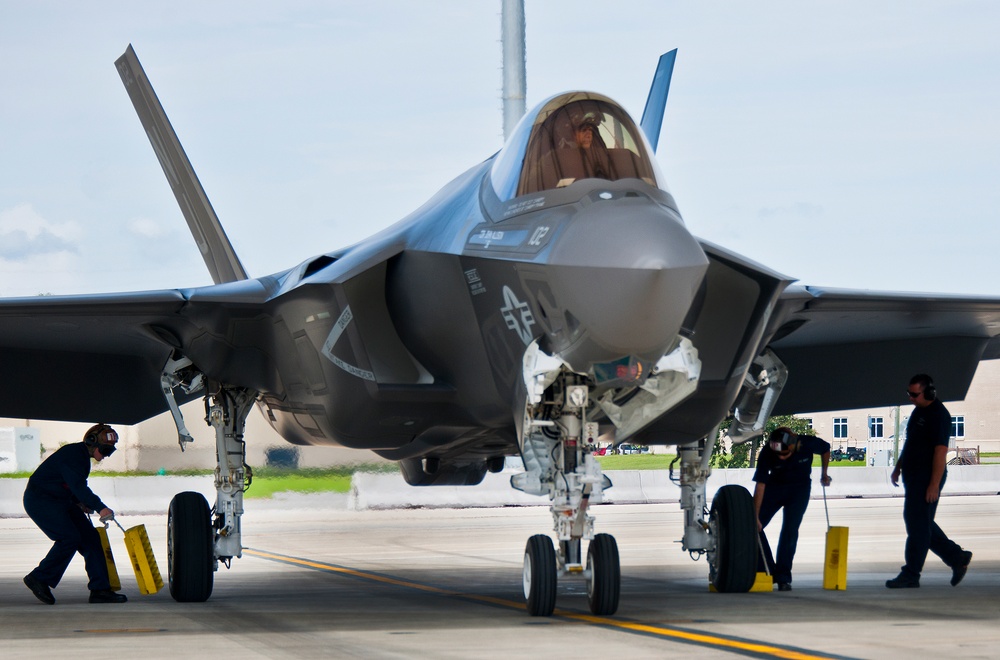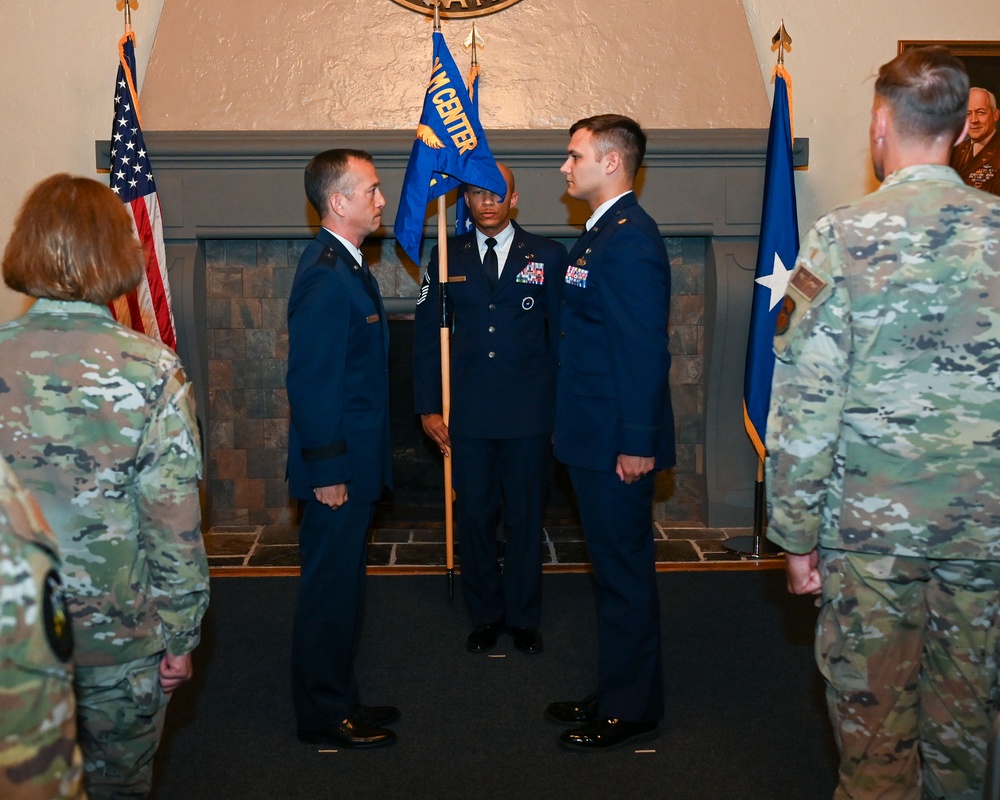XQ-67A, Air Force’s drone wingman prototype, flies for first time
- By Hope Seck
Share This Article

In what appears to be a fist pump as a rapidly built and developed new combat technology comes to life, the U.S. Air Force and contractor General Atomics Aeronautical Systems (GA-ASI) have released a 90-second video showing the first flight of the XQ-67A, a likely predecessor of the service’s long-anticipated collaborative combat aircraft, or CCA.
The new video, published at the end of June, shows the unmanned aircraft taxiing from a covered hangar at the General Atomics Gray Butte Flight Operations Facility near Palmdale, CA, accelerating on the runway, and cruising and banking in the air before returning for a conventional landing.
“Move fast. Move first,” a slogan superimposed by the contractor reads as the drone taxis back.
It’s been an eventful few months for the XQ-67A and the Air Force’s efforts to create a fleet of low-cost, high-tech autonomy-capable aircraft that can network with and support manned fighters in the air. First unveiled in February 2024, the same month it took its first flight, the drone prototype was given a life extension in April when the Air Force awarded both General Atomics and Anduril funding to continue developing their designs. In its own announcement, GA-ASI confirmed it would be sticking with the design of the XQ-67A, which it has called an “Off-Board Sensing Station,” or OBSS.
“The CCA program redefines the future of aviation and will shape the USAF acquisition model to deliver affordable combat mass to the warfighter at the speed of relevancy,” Mike Atwood, the company’s vice president of Advanced Programs, said in an announcement at the time.
Following the release of the previously unseen first flight footage on June 26, the Air Force Research Lab (AFRL) awarded GA-ASI a new $9.3 million contract for additional research on the platform, bringing AFRL’s investment on the XQ-67A up to nearly $68 million. And, in an exclusive report published July 6, Air and Space Forces Magazine revealed that a first contract for delivery of CCA is expected to be awarded to one or both contractors this fall.
The new angles highlighted in the short video underscore the unique design of this prospective fighter jet teammate. Like a fighter, it has a pair of angled vertical stabilizers, a large jet intake – in this case where the cockpit would be – and, as The War Zone has pointed out, what look like openings for side-looking airborne radar. Based on the taxi shots, the aircraft appears to be similar in size to a small private plane such as the Cessna Skyhawk. And like many aircraft in that category, it has fixed, rather than retractable, landing gear.
The unknowns for this CCA prototype remain abundant, including its top speed, range, and payload capacity. Also unclear is what that payload will ultimately consist of, and whether the OBSS, or a variant, will be able to carry weapons. A payload that includes weapons has always been part of the Air Force’s ultimate vision for the CCA. Also unclear is to what extent the OBSS, which is remotely piloted but also capable of autonomous flight, employed autonomy in its maiden flight.
In an announcement accompanying the new footage, Air and Space Forces Magazine hailed the rapid design, building, and testing process that led to a first flight in just over two years.
“It is the first of its kind to be built on a common chassis or genus – much like that of a motor vehicle frame – and with its first successful flight, the XQ-67A is proof that the genus approach works,” the announcement stated. “This enables a faster and more cost-effective replication of the aircraft,” it added.
Related: The Marines want to make their secret beach-swarming drones autonomous

The OBSS shares much of its DNA with the Kratos XQ-58A Valkyrie, an entrant in the Air Force’s Skyborg program that remains in use by the Marine Corps as a testbed platform. The Marine Corps anticipated the Valkyrie to meet a variety of needs ranging from electronic warfare to fires support, and as a platform to inform its own low-cost drone wingman program, the Penetrating Affordable Autonomous Collaborative Killer, or PAACK.
Many challenges remain ahead of OBSS as the Air Force continues to fast-track plans for its cheap, smart drone fleet, which it calls Low Cost Attritable Aircraft Technologies, or LCAAT. The Air Force plans to fast-track production of the first 100 collaborative combat aircraft, delivering them to the fleet by 2029. Ultimately, according to Air Force Secretary Frank Kendall, who testified before Congress this spring, the service wants at least 1,000 and possibly as many as 2,000 CCAs at an individual cost of $30 million or less.
The Air Force hopes CCA won’t just augment or modernize air warfare – but transform it entirely. A report released in February from the Mitchell Institute for Aerospace Studies emphasizes that the service is the “oldest, smallest and least ready in its history” while it faces an “unprecedented threat” from a highly capable China. The report describes an internal wargame employing different mixes of CCA and manned fighters that showed how the unmanned aircraft, if made rugged and capable enough, could “help disrupt and suppress” the integrated air defense system employed by China and supercharge the Air Force’s ability to project combat mass.
CCA, the paper’s authors write, could help disrupt China’s preferred way of fighting and deny the country an assured victory, if employed correctly to multiply capabilities.
“Understanding what is meant by ‘collaborative’ is important to fully appreciate the potential of CCA,” the paper states. “AI-enabled CCA should be capable of collaboratively operating with other crewed and uncrewed aircraft to share threat information, their own locations, and fuel and weapons status across a force package. Future CCA could even be designed to autonomously assign targets to aircraft within a mission package to achieve the best weapons-to-target pairings,” it adds.
As the development phase for GA-ASI and Anduril moves forward, we’ll be looking for demonstrations of how XQ-67A and other prototypes interact with manned fighters and exhibit the full effect of their autonomous and AI networking capabilities.
Read more from Sandboxx News
- The US Navy’s insane new air-to-air missile: The AIM-174
- Chicken or pasta? Air Force KC-46 tanker achieves 45-hour flight
- Video: Do Marines want to turn the MQ-9 Reaper into a stealth aircraft?
- Once forbidden and feared, tourniquets save the life of 15-year-old shark attack victim
- Video: The longest-range air-to-air missile in US history is here?
Related Posts
Sandboxx News Merch
-

‘AirPower’ Classic Hoodie
$46.00 – $48.00 Select options This product has multiple variants. The options may be chosen on the product page -

‘Sandboxx News’ Trucker Cap
$27.00 Select options This product has multiple variants. The options may be chosen on the product page -

‘Kinetic Diplomacy’ Bumper Sticker (White)
$8.00 Add to cart
Hope Seck
Hope Hodge Seck is an award-winning investigative and enterprise reporter who has been covering military issues since 2009. She is the former managing editor for Military.com.
Related to: Gear & Tech

Watchdog reveals F-35’s readiness rates – and they’re not looking good

Air Force has a new secret weapon: Warrant officers

Drones and conscription: Taiwan is learning from Ukraine’s fight against Russia
Sandboxx News
-

‘Sandboxx News’ Trucker Cap
$27.00 Select options This product has multiple variants. The options may be chosen on the product page -

‘AirPower’ Classic Hoodie
$46.00 – $48.00 Select options This product has multiple variants. The options may be chosen on the product page -

‘AirPower’ Golf Rope Hat
$31.00 Select options This product has multiple variants. The options may be chosen on the product page -

‘Sandboxx News’ Dad Hat
$27.00 Select options This product has multiple variants. The options may be chosen on the product page
